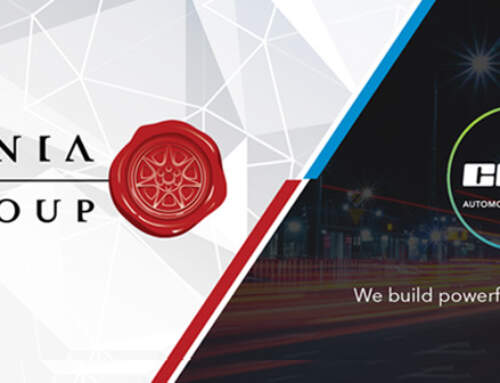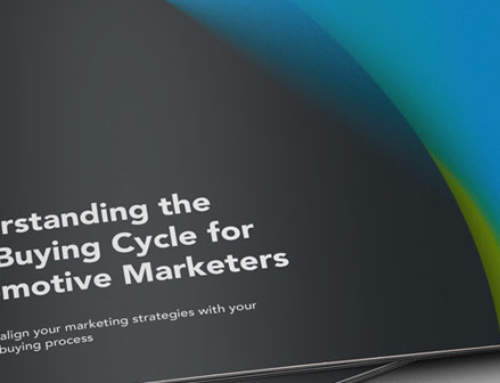Automotive digital marketing isn’t just about having a website.
In fact your website is only scratching the surface – the tip of the iceberg. Automotive digital marketing includes your Website, Email, Search Engine Marketing (SEO and PPC), Social Media, Landing Pages, Video, Banner Advertising, E-commerce and various other software platforms, apps and communications.
But even with all these channels in play, many automotive companies fail to generate a substantial ROI and often achieve poor results. Some automotive businesses don’t really know the true results they’re getting at all. Consequently there is often a dim view of marketing and its practitioners. So what’s the problem?
In my experience, it’s generally not the marketing channels or tools themselves but a lack of strategy that drives under performance. Without a clear plan of how you will achieve your objectives (you have set out some objectives haven’t you?), tactical delivery of email, random SEO and various other digital marketing channels has little chance of success. Optimising your automotive digital marketing platforms is key to making them work harder at engaging visitors, turning visitors into leads and ultimately into customers. A website alone will NOT do this.
But don’t worry – your website is a good starting point. Optimising your digital communications is key to creating value and a real return from any marketing activity. Optimising is the only way to know what is, and isn’t working for your business. It will direct your efforts, resources and budget more effectively and successfully.
So where do you start? How can you optimise your automotive digital marketing to keep one step ahead of your competition?
First off, let’s have a look at what we can do to prove ROI and the value of automotive digital marketing.
Fact: the internet is an infinitely measurable place. Analytics tools such as Google Analytics, tracking URLs, UTM tags, social scraping tools, CRM integrations, and scores of other reporting mechanisms provide real-time data of online marketing efforts. This indisputable truth translates into two realities for online and digital marketing activities:
1) Instant Accountability for Underperformance
Whether the goal is an uplift in website traffic from SEO changes, or a number of new leads from an e-book offer, the numerical results are black and white. Pass or fail. Simple as that.
2) Undeniable & Quantifiable Proof of Success
The amount by which a goal was exceeded can be easily tracked for an online campaign. Doing so will prove the worth of the methods used and bolster the credibility of the marketing activity.
Like any investment in your business, you should demand accountability from your marketing team. What’s more, they should be glad you do and only too pleased to provide it. After all, the tools and data are readily available.
Conversion Optimisation is an on-going discipline and should feed into your regular marketing activities and action plans. Here are my tips for driving ROI from your automotive digital marketing activities.
1) Define your objectives. Before starting any marketing activities of any sort, you really need to decide what you want to achieve. Aligning your marketing with objectives with your business objectives will help drive ROI from your marketing investment. Once you have defined your objectives communicate them in the form of a brief.
2) Create a marketing brief. Everyone involved in the marketing campaign needs to be aware of what is expected. What you are trying to achieve and what results your expecting.
3) What gets measured gets done. By agreeing to measure activities you’re more likely to get them done effectively. Decide what will be measured, assign KPIs and the metrics you will use to measure them.
4) Design for Conversions. Any communication, be it your website, email, landing page or PPC advert should be designed for high conversions. Work out what your visitor wants and give them information that solves their problems, makes their life easier or entertains them. Remember to frame your communications from their perspective and communicate benefits over features.
5) Every website page should convert. Work out what you want your website visitors to do. Design your page and create content to guide the visitor towards the conversion you want them to take: Download the product specification, watch the video, sign up for a demo, contact your sales team, buy the product. Whatever your conversion is, your content should lead the visitor to taking the action you want them to take. Set your conversions as goals in your Google Analytics to measure the conversion rates. Don’t forget your call to action (see below).
6) Call-to-Action. Design clear calls to action and explain clearly what to expect by clicking on it. For example: Don’t expect many visitors to sign up for your newsletter by saying something like “Join our monthly news letter – click here to subscribe”. This doesn’t explain to your visitor what they’ll get by subscribing (what’s in it for them). Try to write your call-to-action by explaining the benefits of joining your newsletter. For example, the CMB newsletter sign up form says, “Get useful and free marketing tips straight to your inbox”. The call-to-action describes exactly what they’ll get and encourages them to sign up.
7) Don’t ask for more than you need. Many web forms ask for way too much information. Visitors don’t like filling out long forms and they are known to kill conversion rates. Just ask for the information you really need. Often, that could simply be a Name and an Email address.
8) Research keywords and optimise your content for them. Getting found online seems to be a key concern for most businesses. You can increase your position in the SERPs (Search Engine Results Pages) by making sure all your content is optimised for relevant keywords. Don’t forget page titles, H-Tags and so on. See our guide to on-page SEO for more on this subject here.
9) Email Marketing. Respect the Inbox. Make every email a gift. Concentrate on relevance and making subject lines interesting enough to inspire an open.
10) Landing Pages. Go beyond the home page. If email, advertising and PPC is part of your marketing mix, create specific conversion focused landing pages to direct visitors to. These should reflect the subject, content, look, feel and messages of the communication that sent them there. For example, if I click a PPC advert saying “Stainless steel brake lines” I’d expect to be taken to a landing page specifically about stainless steel brake lines– not the generic website home page showing brakes, exhaust systems, air filters and suspension coil-overs. Directing a click-through to irrelevant pages of your website is a major conversion killer.
11) Avoid template marketing and a one size fits all approach. Every campaign should have a specific goal (see point 1 above) and more often than not, this requires a specific and unique approach to achieve. By using templates and generic marketing tools and techniques you’re missing an optimisation opportunity and will be less likely to get the results you need.
12) Create useful content. If you create content as part of your marketing strategy, make sure it provides relevant, useful information – without selling or interrupting.
13) Be Social. Ahh, Social Media. Love it or hate it, its here to stay. It can be an opportunity. However, get it wrong and it can cause you no end of problems. Develop a social strategy and decide what your objectives are. Include social share buttons on your web pages and blog posts where relevant to do so. Don’t forget, social media can be sued to help attract talent to your business as well as developing your brand.
14) Blogging. When writing a blog, the objective of the headline is to get your reader to click.
15) It’s about you not me. Your blog shouldn’t be about you or your product. It should be about your reader, their needs and how you can help solve them.
16) Don’t set it and forget it. There’s no use in deploying digital marketing communications and then leaving them with out optimising, tweaking, updating, measuring and checking. Its better to do a few things really well than many things poorly.
17) Testing, testing, 1-2-3. Use A/B split testing to evaluate what works best. Don’t just leave it to guess work and opinions. Split tests will deliver the REAL results for true optimisation. Analyse the data produced over a set period and go for the version producing best results.
18) Be responsive. Your digital communications need to work on mobile devices. Roughly 65% of email is now opened first on mobile and just under 25% (and rising) of all web traffic is through mobile devices.
19) Measure it. If you don’t measure it you don’t know if it’s working. Measuring analytics and the data extrapolated from digital metrics will give you the information you need to optimise further and drive real results.
20) Be Agile. Don’t be afraid to try something new. Digital marketing gives us the ability to deploy marketing communications very quickly to respond to challenges or market opportunities. Dive in and have fun!
I challenge you to take one of these points each week and apply it to your own automotive digital marketing. See how your results improve. I hope this helps and inspires you to create the digital experience you know your visitors are looking for and drives the ROI you never knew you could achieve!
Want to know more?
Check out our automotive marketing resources for information and guidance or contact us today to discus your next digital marketing project.











